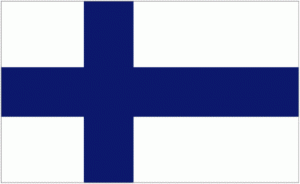Tariq Saeedi
If you have not heard of Solein, you will – possibly as early as next year.
Solein is a protein powder, similar in form and taste to the wheat flour. It has been developed by the Finnish company Solar Foods, based on concept from NASA.
It will be commercially launched in 2021. The company hopes to start producing some two million meals annually with revenue of up to USD 800 million by 2023.
Solar Foods aspires that by 2005, Solein should be providing sustenance to 9 billion people as part of the USD 500 billion protein market.
Solein is literally pulled out of thin air. It is made from carbon dioxide, water, electricity. This high-protein ingredient contains 50% protein content, 5-10% fat, and 20-25% carbs.
Initially it may appear on the market shelves as part of the protein shakes and yogurts, the kind of products increasingly popular with the younger and fitness-conscious crowd.
The main ingredient of Solein is carbon dioxide – it means that the more Solein we produce, the more carbon dioxide we remove from the atmosphere.
Moreover, Solein detaches the production of protein from the agriculture sector. The processes that lead to the production of Solein – extracting carbon dioxide from air using the carbon-capture technology, combining it with water, nutrients and vitamins, and managing the fermentation process similar to the one used for the production of yeast and lactic acid bacteria – can all be performed indoors.

The production of Solein is free of the agricultural constraints such as arable land, abundance of water, suitable climate etc. It is also free of the methane emission that comes from the farm animals. It is a protein without the ecological cost we pay for protein. It can be produced wherever one can find carbon dioxide – in space, at another planet, wherever.

More about Solein can be found here: Big Think
https://bigthink.com/technology-innovation/protein-from-air?rebelltitem=4#rebelltitem4
* * *
The population of Finland is about 5.5 million. This is comparable to the population of several of the countries of Central Asia.
Considering that the nature has distributed talent among all the nations and people equitably, this region has the potential to match the range of inventions and discoveries of Finland.
Here are some of the things we got from Finland:
Linux, the ‘operating system for the smart people’ was created by the Finnish inventor Linus Torvalds in 1991. He was still a student when he created Linux. The versions of Linux, and its related system, Unix, are that power the Internet servers. On smaller scale, Linux is a competent alternative to the Windows.
Every browser including the one you used to access the Internet this morning owes its existence to Erwise. It was created by a group of Finnish students in the 1990s and it is the prototype from which all the advanced web browsers we use today were developed.
The IRC (Internet Relay Chat) was invented in 1988 at the University of Oulu. It allowed for text chats by connecting to a central server. It gave the concept and means for real time connectivity among the people, something that we take for granted today.
The wind turbine, an important mean of renewable energy, was created in 1922 by the Finnish engineer Sigurd Savonius and subsequently named the Savonius turbine. Simple to operate and easy to maintain, the design is still used for the power generation and also for the cooling system of large vehicles.
The heart rate monitor was introduced by the Finnish company Polar Electro in 1977. It was also the first piece of wearable wireless technology available. The first monitor was battery powered and attached to the fingertip.
Nokia, a Finnish company, invented the fairly simple, but longest-lasting, mobile phones to date. Most can be used even in harsh conditions. Some models of Nokia are returning from near oblivion.
The reflector strips, for clothing and vehicles, were invented by Arvi Lehti of Finland in 1955. It is a great safety feature for people, animals, things and structures. A person wearing reflector strips can be seen from a car at distance of 300 meters compared to a person not wearing the reflector strips.
The widely popular mobile game Angry Birds was introduced by Rovio Entertainment. It has been downloaded over one billion times. Its popularity has spread to include merchandise, sweets, a feature film and even a theme park in Finland.
Even if you haven’t heard of xylitol, there’s a good chance you’ve encountered or consumed it. Primarily made from birch tree branches found in Finland, Xylitol is an alternative to sugar used to prevent cavities, plaque, pneumonia, osteoporosis, and ear infections in children. It is found in many popular brands of chewing gum, candies, and butter substitutes. It was launched in 1975 by the Finnish scientists.
The world famour ‘Maternity Box’ of Finland has improved the lives of newborn babies and their mothers since its launch in 1938. The box includes clothes for summer and winter, a duvet, cuddly toy, a bib etc. Additionally, the box itself can be used as a cradle. The mothers in Finland are given a choice: either they can take the maternity box or they can take the equivalent value in cash. About 95% of mothers prefer the maternity box over cash.
The black box which is crucial in investigating the unfortunate case of an aircraft crash was invented in 1942 by the Finnish aviation engineer Veijo Hietala.
And, of course, Iittala glassware is one of the most iconic and valuable brands of Finland. In production since 1881, everything made by Iittala is a work of art.
This is just a small sampling from a vast list of what Finland has given to the world. /// nCa, 22 January 2020
To be continued . . .
